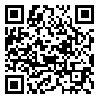Wed, Dec 17, 2025
[Archive]
Volume 14, Issue 3 (7-2024)
Iran J Ped Hematol Oncol 2024, 14(3): 217-226 |
Back to browse issues page
Ethics code: IR.IAU.PS.REC.1399.053
Download citation:
BibTeX | RIS | EndNote | Medlars | ProCite | Reference Manager | RefWorks
Send citation to:



BibTeX | RIS | EndNote | Medlars | ProCite | Reference Manager | RefWorks
Send citation to:
Farajzadeh P, Forouzesh F, Nabigol M, Allahbakhshian Farsani M. Evaluating the expression of LKB1, SHMT1, and GLDC genes in Acute Lymphoblastic Leukemia patients. Iran J Ped Hematol Oncol 2024; 14 (3) :217-226
URL: http://ijpho.ssu.ac.ir/article-1-840-en.html
URL: http://ijpho.ssu.ac.ir/article-1-840-en.html
Department of Hematology and Blood Bank, School of Allied Medical Sciences, Shahid Beheshti University of Medical Sciences, Tehran, Iran & Department of Hematology and Blood Bank, School of Allied Medical Sciences, Shahid Beheshti University of Medical Sciences, Tehran, Iran
Abstract: (1025 Views)
Background: Epigenetic changes in cancer cells have an immense effect on tumorigenesis. As a tumor suppressor and an epigenetic regulator, liver kinase B1 (LKB1) reduces gene methylation by downregulating metabolic pathways such as the serine-glycine pathway. This study seeks to examine the gene expression levels of serine hydroxymethyltransferase 1 (SHMT1) and glycine decarboxylase (GLDC), as two serine-glycine pathway regulatory genes, along with LKB1 in acute lymphoblastic leukemia (ALL) patients.
Materials and Methods: In this analytical study, qRT-PCR was used to evaluate the gene expression levels of LKB1, SHMT1, and GLDC in 50 ALL patients with an average age of 11.64 ± 10.6 years. The patients were compared to 10 healthy controls. Subsequently, the correlation between the gene expression levels and the patients’ demographic data was investigated.
Results: No significant difference was found between the ALL patients and the control individuals in terms of LKB1 and GLDC gene expressions, but SHMT1 was significantly overexpressed in the ALL patients (p = 0.003). Moreover, there was a significant association between GLDC and the other SHMT1 (p = 0.020) and LKB1 (p = 0.047). No significant connection was also found between the age (pL = 0.304, pS = 0.305, pG = 0.899), gender (pL = 0.475, pS = 0.299, pG = 0.388), and blast percentage (pL = 0.335, pS = 0.148, pG = 0.459) of the patients and the genes.
Conclusion: The increased expression of SHMT1 suggests the oncogenic role of this gene. Thus, the present study offers a novel diagnostic marker in ALL patients.
Materials and Methods: In this analytical study, qRT-PCR was used to evaluate the gene expression levels of LKB1, SHMT1, and GLDC in 50 ALL patients with an average age of 11.64 ± 10.6 years. The patients were compared to 10 healthy controls. Subsequently, the correlation between the gene expression levels and the patients’ demographic data was investigated.
Results: No significant difference was found between the ALL patients and the control individuals in terms of LKB1 and GLDC gene expressions, but SHMT1 was significantly overexpressed in the ALL patients (p = 0.003). Moreover, there was a significant association between GLDC and the other SHMT1 (p = 0.020) and LKB1 (p = 0.047). No significant connection was also found between the age (pL = 0.304, pS = 0.305, pG = 0.899), gender (pL = 0.475, pS = 0.299, pG = 0.388), and blast percentage (pL = 0.335, pS = 0.148, pG = 0.459) of the patients and the genes.
Conclusion: The increased expression of SHMT1 suggests the oncogenic role of this gene. Thus, the present study offers a novel diagnostic marker in ALL patients.
Type of Study: Research |
Subject:
Hematology
Received: 2024/02/11 | Accepted: 2024/06/24 | Published: 2024/07/20
Received: 2024/02/11 | Accepted: 2024/06/24 | Published: 2024/07/20
Send email to the article author
| Rights and permissions | |
 |
This work is licensed under a Creative Commons Attribution-NonCommercial 4.0 International License. |





